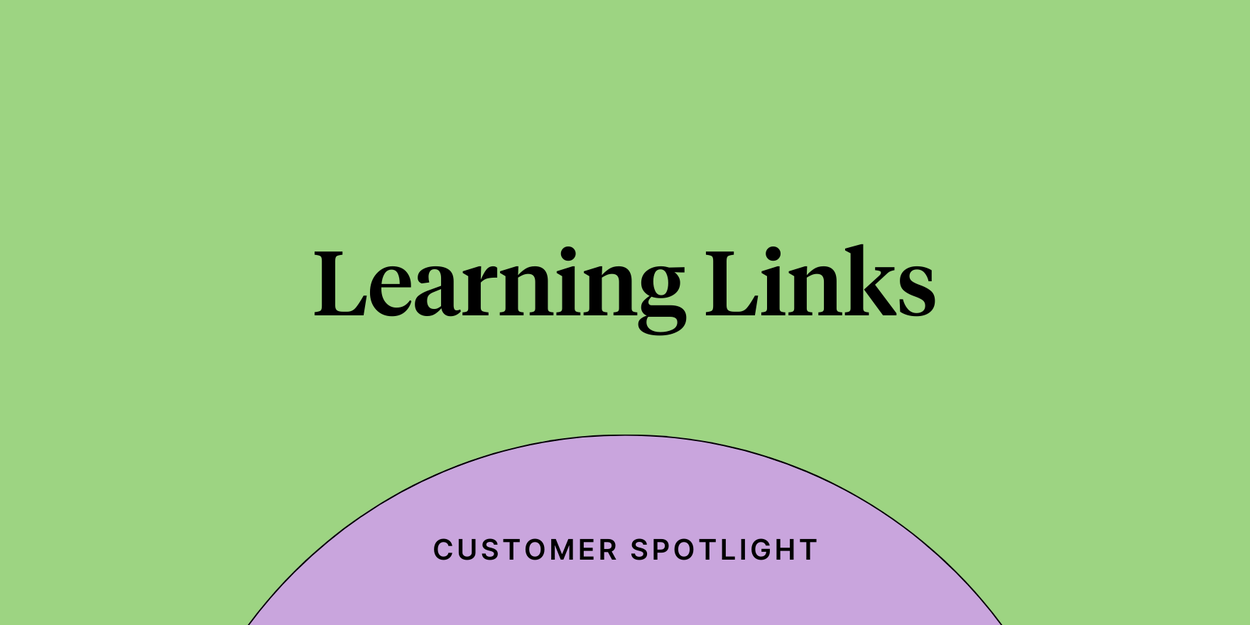
How Learning Links overhauled the performance management process

Utter the words “performance management” and you’re likely to be met with groans and sighs. It’s often a dreaded process – for employees, managers, and HR teams.
Performance conversations are important, but they can also be daunting. That’s especially true when they only happen once or twice a year. When these conversations are infrequent, employees have to wade through months of paperwork and may feel plagued with uncertainty about what could come up during their review.
Some companies have aimed to resolve those frustrations by eliminating performance reviews entirely. But effective performance management isn’t about elimination – it’s about optimization.
That’s where continuous performance management comes in. With this approach, growth and career development topics aren’t reserved for a conversation once or twice a year. Instead, the performance process is embedded in daily work. “It’s in those regular check-ins. It’s in how you interact with your peers,” explains Devshree Bhatt, Senior People Scientist here at Culture Amp.
But what does it take for organizations to successfully evolve and improve the performance management process in this way? In a recent webinar, Devshree connected with Alex Biviano, Head of People and Culture at Learning Links, to discover how the company built a culture of feedback and transformed performance management from a dreaded obligation to a welcomed opportunity.
The pains of performance management: How Learning Links knew it was time for change
Much like with any other business process, you have to start somewhere – and Alex readily admits that Learning Links’ original performance management process had a lot of room for improvement. “Our previous process was paper-based, and there was a real ‘report card’ vibe around it,” she shares.
Everything lived on a single form – a record of 1-on-1 meetings, goals, mid-year progress, end-of-year progress, values, questions, comments, and more. Alex notes it was nearly “impossible to capture our whole year's worth of conversations in a Word document.”
The entire process felt overwhelming, heavy, and time-consuming, which made it tough for people to actually engage. “Often, we had people completing it almost under duress and just shoving it in the drawer, slamming the door shut, and saying, ‘That's it for the year,’” Alex adds. “There was no way that we could tie this very traditional performance process to anything else because it was done in a rushed way, and people weren't really fully engaging in the process.”
A phased approach to performance management: How Learning Links repaired the performance management process
Learning Links knew it was time to make a change. But Alex and her team also recognized that overhauling a process and introducing a new tool can feel overwhelming for employees and managers.
So despite the enthusiasm to revamp what wasn’t working, Learning Links took a slow, deliberate approach to improving performance management and rolling out Culture Amp to the team.
Alex notes that they started with a simple heads-up to the entire team – letting them know that a new tool was coming and they’d be kept in the loop. They also set up a project sprint team that ran from August to November of 2021. This team brought together all different levels of Learning Links’ staff to engage in candid conversations about the process and how to manage the transition effectively.
Those discussions inspired Learning Links’ roadmap, a four-year plan for rolling out performance management that spanned from 2021 through 2024.
It started small. Learning Links launched a light version of the process and tool in December 2021 that was completely optional, but several early adopters came on board. From January to April, the company hosted informational sessions and engaged in a lot of demos and conversations with people leaders to build interest and familiarity with the tool.
“One of the things that we wanted people to do is to not feel like this was some big intense system that they had to learn, but what we found by not giving them everything all at once is that they were coming to us and asking for more,” Alex explains. “Having that really gradual roadmap, it helped generate a lot of interest, and people took a lot of initiative on the platform.”
It’s a solid lesson for any company that needs to improve or overhaul a process: you don’t need to do everything all at once. Devshree mentions that a staggered approach or experimenting with a small area of the business can make things less overwhelming. Treating the rollout like a marketing campaign builds interest and enthusiasm, secures buy-in, and ensures people feel informed and capable.
How Learning Links built a culture of feedback
To ensure that performance management is integrated into normal workflows rather than being a sporadic or infrequent initiative, there’s another big piece of the puzzle: feedback.
It’s an area that Learning Links emphasized, with Alex noting that many employees explored Culture Amp and found feedback resources on their own.
In terms of a broader organizational strategy, the company now brings all of the company’s people leaders together quarterly to build a sense of belonging and share expertise. Alex did a nimble workshop for leaders using the tips and strategies built into Develop. She also took it upon herself to model continuous feedback on her own team and across the organization.
Devshree agrees that sort of example-setting is a crucial factor. “The importance of leaders role modeling what constructive feedback looks like can't be underestimated,” she shares. “It's so important for employees in your organization to see how leaders disagree with one another and how they take on that feedback.”
“It really worked,” Alex says. “We had really vulnerable conversations with each other. We called each other out if something didn't feel right.”
The modeling was a huge part of it, but Alex says Learning Links also supported people leaders with other interactive workshops and resources from Culture Amp – such as the feedback prep grid and playing cards method.
By focusing on leaders first and foremost, Learning Links successfully set the tone for what a feedback culture looks like – and employees were eager to adapt. Alex says employees started to ask to be involved in meetings and feedback conversations. “They really love that concept of getting more of that feedback,” she says. “They're hungry for it.”
Performance management: An opportunity, not an obligation
After taking a phased approach to overhauling the performance management process and prioritizing a culture of feedback, Learning Links has experienced plenty of benefits. But the biggest is the level of engagement they see in the entire performance development process. “We are not chasing people down as much anymore,” Alex says.
That’s the power of continuous performance management – it transforms those development conversations from burdensome responsibilities to beneficial encounters. It turns stressors into stepping stones. Obligations to opportunities.
“It's now no longer a conversation that we're only having once or twice a year,” Devshree concludes about the importance of continuous performance management. “It's embedded in the flow of work. And that's what we really mean when we're talking about continuous performance. It's not that every day we're talking about your individual performance. It’s, ‘How do I make sure that you are getting useful feedback to improve the work that you're doing?’”





